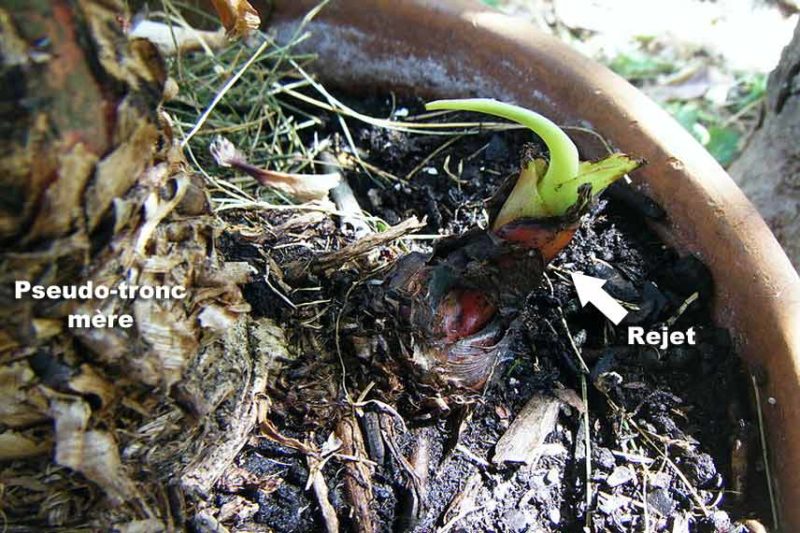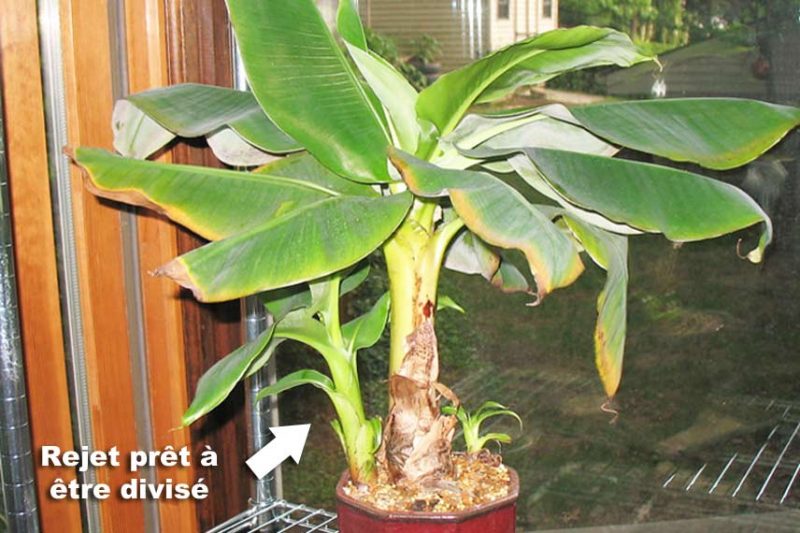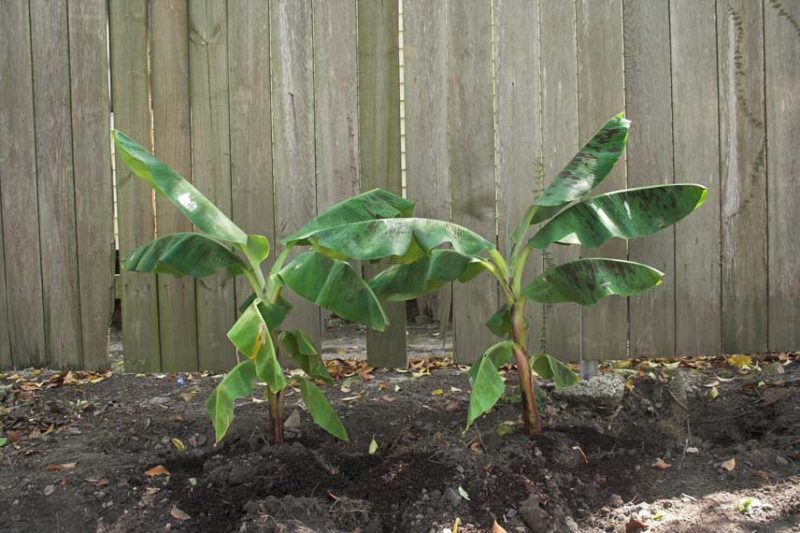The popularity of exotic gardens, and therefore banana plants, has been growing for several years. It must be said that with its mere presence, this giant herbaceous plant gives an undeniable tropical atmosphere to a space. All the more so as the banana plant benefits from rapid growth, which allows it to quickly become one of the garden’s must-have ornaments.
While banana plants can now be found in garden centres, it is also perfectly possible to multiply them yourself. Sowing seeds is therefore an option, but this method requires a lot of patience and can be unpredictable. In addition, some banana varieties do not produce seeds, notably Cavendish banana plants. The simplest way to multiply a banana plant remains to remove a sucker. This method is accessible even to beginner gardeners, and it is also very quick with an immediate result.
Here is how to multiply a banana plant by removing a sucker.
How to recognise a banana sucker?
Banana plants are herbaceous rootstock-producing plants, which means they produce rootstock. These running roots multiply from the mother plant of the banana plant, and in turn form new shoots, which are called suckers. Most often, the first suckers of a banana plant appear once it has developed sufficiently. Thus, a healthy banana plant, benefiting from good growing conditions (feeding, watering, etc.), will inevitably produce suckers!
To multiply a banana plant, you must first be able to spot the suckers. Rest assured, this is not complicated — just look at this photo:

Young banana sucker © FRUIT – Wikimedia
As you will have understood, the mother plant’s suckers are attached to it via its roots. To propagate the banana plant, you therefore need to separate the young shoot from the mother plant, which is called dividing the rootstock.
Solenne’s note: if suckers are left in place, the banana plant will gradually thicken into a magnificent clump. Once it has fruited, the mother stool dies and disappears, and the new shoots then take its place, producing their own suckers in turn.
When to propagate a banana plant?
Remove suckers while the banana plant is in its active growth period, that is, when temperatures are warm enough to ensure good establishment.

Banana sucker ready to be propagated © Tony Buser - Flickr
Similarly, you must be patient and let the sucker grow before separating it from the mother pseudo-trunk. Ideally, wait until it is at least 40 cm tall, and has produced 4 or 5 good leaves. Indeed, a sucker only 10 cm high will struggle to establish once separated from the mother plant because it will have few roots. Once it has had time to develop, the young shoot will have accumulated enough reserves and will already have produced some roots to help it restart quickly.
How to separate a banana sucker?
First of all, it is useful to stress the hygiene that must be respected throughout the propagation of the banana plant. Make sure therefore to clean your tools and pots before you start the operation, so as not to transmit disease to your banana plant.
Equipment
- 1 hoe
- 1 pruning shear or 1 knife
- cinnamon powder or charcoal
- ripe compost
- crushed horn
- 1 large pot 30 cm in diameter
- clay balls
Dividing the suckers
- Start by removing some of the soil placed all around the young shoot you wish to separate from the mother plant. In this way, you will be able to check for the presence and condition of its roots
- If these are healthy, gently free the sucker’s roots using the hoe, until the rootstock becomes visible
- So as not to damage the sucker’s roots, dig with your hands until you locate the junction point between the sucker and the mother stool
- Then take a perfectly sharp, disinfected pruning shear or knife, and cut cleanly as close as possible to the main pseudo-trunk
- To limit evaporation, remove all basal leaves from your sucker and keep only its central leaves
- To reduce disease risk, sprinkle the cut on the rootstock with cinnamon powder or charcoal
Solenne’s tip: at this stage it is sometimes advised to let the sucker dry before returning it to the soil. However, better avoid leaving the roots exposed to air and light for too long! Let it dry only while you prepare the planting hole or pot.
Replanting the sucker
Depending on its hardiness and your region, the new young banana plant can be grown in open ground or in a pot.
In open ground
- Dig the planting hole in a sunny position
- Enrich the soil with a good shovelful of compost and crushed horn
- Place the sucker vertically in the hole
- Backfill and firm the soil around the collar
- Water generously, without waterlogging the soil

Banana cuttings in open ground © Tony Buser - Flickr
In a pot
- Use a large pot of at least 30 cm diameter with a drainage hole in the base
- Create a thick layer of clay balls at the bottom of the container
- Fill the pot with a free-draining mix of garden soil and compost
- Plant the banana sucker and water
- Place the pot in a warm, bright position
- Keep the substrate slightly moist to ensure good establishment

Banana cutting in pot © mannewaar - Flickr
































Comments